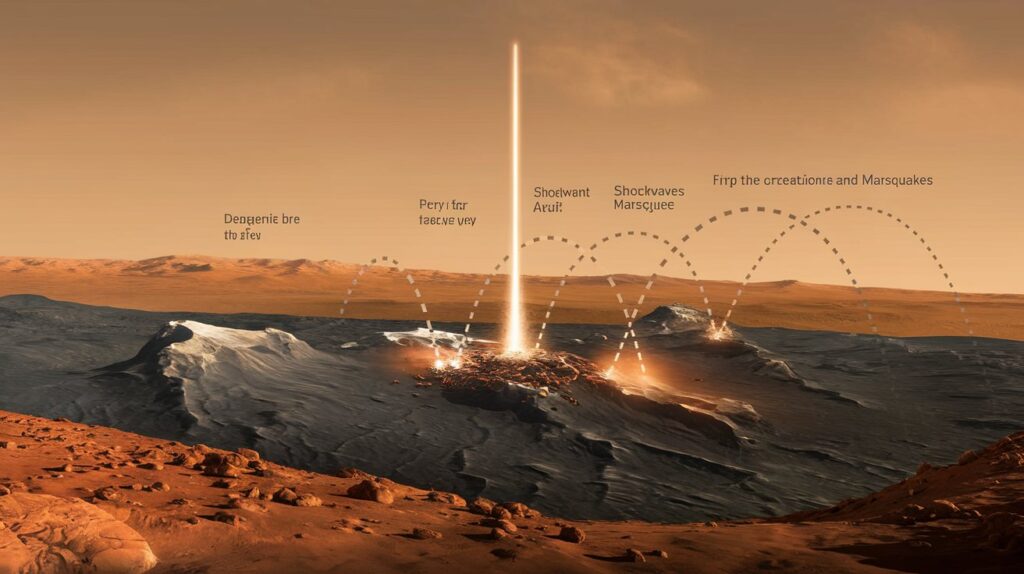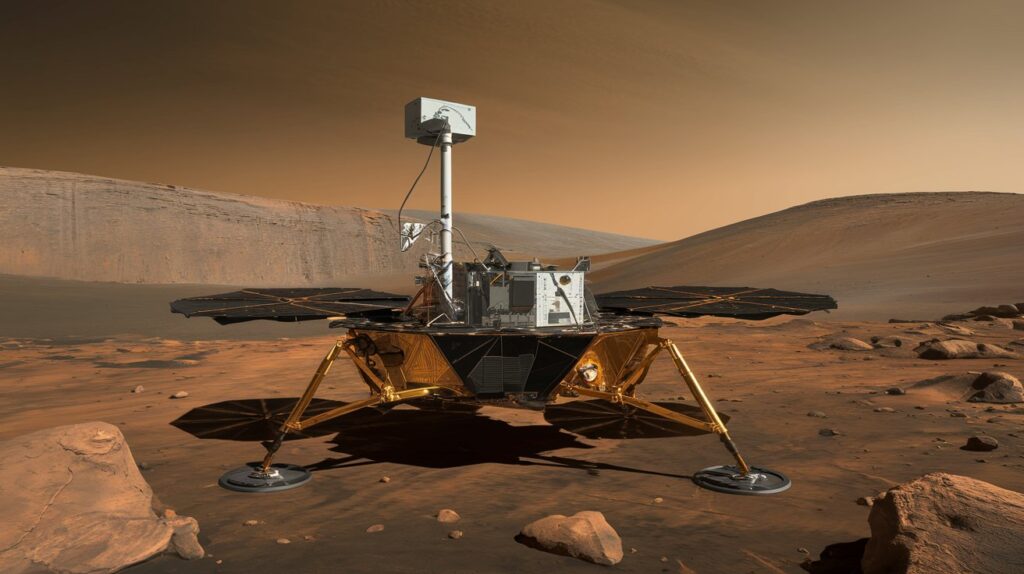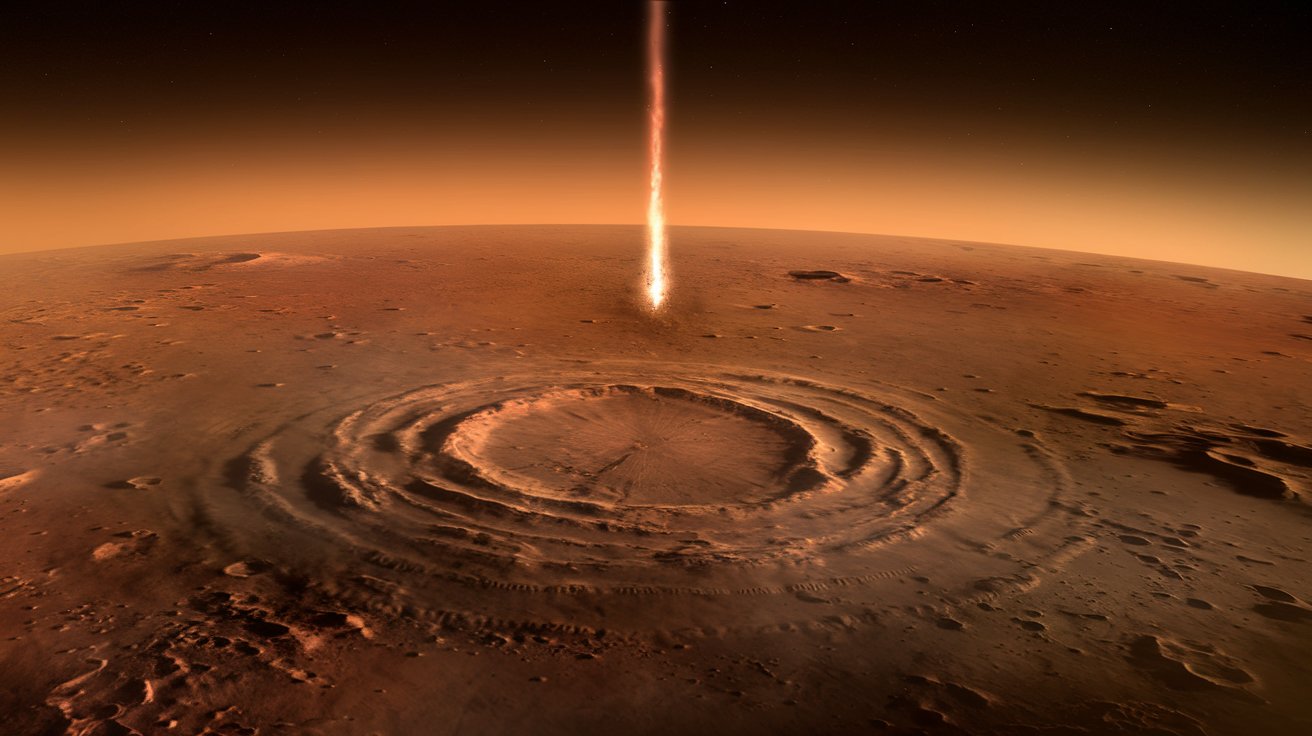Meteoroid Impacts Significantly Trigger Marsquakes, Study Finds
Mars, the enigmatic red planet that has captivated scientists and enthusiasts alike, continues to reveal its secrets, especially regarding its geological activity. Recent research has uncovered a fascinating connection between meteoroid impacts and the generation of marsquakes, shedding new light on Mars’ geological processes. This blog post dives into the findings of this groundbreaking study, exploring how impacts from space significantly influence seismic activity on Mars.
Table of Contents
The Significance of Marsquakes
Marsquakes are the Martian equivalent of earthquakes, and their study is crucial for several reasons:
- Understanding Martian geology: Marsquakes provide insights into the planet’s internal structure and composition.
- Planetary evolution: Examining these quakes helps scientists understand the geological history of Mars, which may offer clues about its past habitability.
- Impact of external forces: Since Mars lacks substantial atmospheric protection, meteoroid impacts become a significant factor in its seismic activity.
Meteoroid Impacts: A Catalyst for Seismic Activity
According to the recent study published by scientists leveraging data from NASA’s InSight lander, meteoroid impacts have been identified as a primary trigger for marsquakes. The research team utilized state-of-the-art simulations to demonstrate how these high-velocity impacts can induce underground vibrations, leading to seismic activity. Key insights from the study include:
- The correlation between the size of a meteoroid and the magnitude of the resultant marsquake.
- The identification of specific impact sites that are hotspots for seismic activity.
- The realization that Marsquakes triggered by impacts can occur even days or weeks after the initial event.
How Does It Work?
The mechanics behind meteoroid impacts and their ability to trigger marsquakes can be broken down into several steps:

- Meteoroid entry: When a meteoroid enters the Martian atmosphere, it travels at high speed and generates significant energy upon impact.
- Shockwave creation: The impact creates shockwaves that travel through the Martian crust, creating vibrations detectable as marsquakes.
- Seismic propagation: These shockwaves can disseminate through the Martian landscape, affecting large areas and leading to multiple detected quakes over time.
What Previous Research Suggested
Prior studies had established that Mars experiences seismic activity; however, the specific role of meteoroid impacts remained largely speculative. By utilizing data from the InSight mission, which includes sensitive seismometers, researchers were able to collect empirical evidence linking meteoroid impacts to detected marsquakes. These findings pull together various threads of Martian research, painting a more cohesive picture of its geological activity.
Data from the InSight Mission
The InSight lander, which has been actively collecting data on Mars since its arrival in 2018, has played a pivotal role in this study. Some key features of the InSight mission include:

- Sensitive seismometers: Designed to detect minute seismic vibrations on Mars.
- Long-duration monitoring: InSight has provided ongoing observations, allowing researchers to study marsquakes over extended periods.
- Comprehensive data analysis: The lander has gathered extensive data on temperature, wind, and seismic events, making it an invaluable resource for understanding Martian conditions.
The Broader Implications of the Findings
The research opens new avenues for understanding not just Mars, but also other rocky planets. The implications of these findings extend to:
- Comparative planetology: Insights gained from Mars can enhance our understanding of seismic activity in other planetary bodies within our solar system.
- Future exploration: The data may inform future missions aimed at detecting life, as seismic activity could play a role in the subsurface processes that might create habitable environments.
- Hazard assessment: Understanding how often marsquakes occur and their intensity can help future rover missions prepare for potential seismic events.
Community Engagement and Future Research
As the scientific community continues to unravel the mysteries of Mars, collaboration and data sharing will be crucial. Future studies will likely focus on:
- Refining seismic models: Improved models can help predict where and when marsquakes may occur.
- Impact monitoring: Continued observation of meteoroid impacts will enhance our understanding of their effects on planetary geology.
- Interdisciplinary research: Collaboration between geologists, astronomers, and planetary scientists can lead to richer understandings of Mars’ processes.
Conclusion
The interplay between meteoroid impacts and marsquakes presents a captivating dynamic in Martian geology. As researchers continue to analyze data from the InSight mission and future explorations, our understanding of Mars—and perhaps other celestial bodies—will deepen considerably. Armed with these new insights, scientists can better appreciate the complex and vibrant geological history of the red planet, while also preparing for what lies ahead in Mars exploration.
As we journey deeper into the mysteries of Mars, one thing is clear—the planet holds many more secrets, waiting to be uncovered. [USnewsSphere.com]





